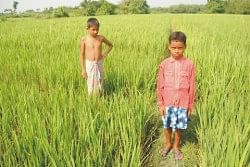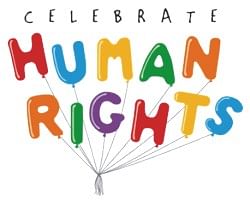Human Rights Watch
Border killings mount despite no-shooting decree
 |
Source:IRIN |
The death toll at the Bangladesh-India border continues to mount three months after the Indian government instructed its border security forces to stop shooting civilians suspected of being undocumented migrants or a threat to national security, say local residents. NGOs have denounced the border killings as extrajudicial. The abuse continues, according to Bangladeshi human rights NGO, Odhikar, which accuses India's border security force (BSF) of circumventing the recent no-shooting decree with beatings, stonings or poisoning. However, the First Secretary of the Indian embassy in Bangladesh's capital, Dhaka, told IRIN that any killings had been linked to border crime.
"The BSF does not attack civilians. This is not happening any more. Only in a few cases, they have acted in self-defence," said Manoj Kumar Mohapatra.
Some 347 Bangladeshis and 164 Indians have been killed by Indian forces since 2006, when the Indian government built the wall, according to BSF.
Mohammad Baten, the latest man allegedly killed by the BSF - the 24th this year - was reportedly beaten to death, according to Bangladesh's border security.
The 4,000km fence has been dubbed the "Great Wall of India" by international media, while locals simply know it as the "wall of death".
India's government built the wall to restrict movement of "illegal immigrants, smugglers and suspected Islamic militants", according to officials quoted in local media.
Farmers corralled by the barbed wire find it increasingly difficult to lead ordinary lives.
"They have surrounded the people of Bangladesh on three sides with barbed wire," said Adilur Rahman, secretary of Odhikar. "It's like the Berlin Wall. You have brothers, even husbands and wives, separated on both sides."
Distant neighbours
"When they turn [the floodlights] on, the night becomes day here," says nine-year-old Anis Ahmed.
The barbed wire is visible from Ahmed's house at the border near the village of Amgaon in Bangladesh's Dinajpur District. Ahmed and his 11-year-old cousin, Shohir Jamal, work on their family's farm every day. Their crops grow right up to what is known as the zero point of the border, where Bangladeshi and Indian soil meets.
On this particular day, Ahmed and Jamal walked towards the border while two guards monitored them with binoculars.
"We go up to the fence all the time," they told IRIN. Wary adults lingered behind, warning them not to go further.
Ahmed and Jamal work on their farm side by side with Indian farmers, who cross the border to work on their land.
"The Indian farmers never speak to us," says Ahmed, "If they do, the BSF yells at them. If we try to talk to them, they don't pay any attention to us. They are worried that the BSF will accuse them of being smugglers, or helping illegal immigrants."
Suspicion
There is mistrust on the Bangladeshi side of the border too. "At night we put our cows inside the house and lock up all the animals," said Jamal. Against the backdrop of border crimes, villagers become suspicious, according to a local primary school teacher, Jalal Ahmed.
"Everyone else thinks we're all smugglers here, so our people have to deal with that prejudice. And there are [actual] criminals here, not just cattle smugglers but a lot of drugs are smuggled here too," he said. "It's very bad for our society, for our children."
Felani Khatun, 15, an undocumented Bangladeshi immigrant in India, was shot while climbing the wall to cross back home on 7 January this year. A photo of her lifeless body hanging from the barbed wire sparked widespread uproar in Bangladeshi media.
Nur Islam, Khatun's father, had successfully climbed over the fence seconds before Felani was shot.
"There was no shout, no warning," he told IRIN. "I don't understand why they didn't shout anything. I saw them. They just got up and shot. And my girl cried out."
Source: IRIN.
 |
Source: ohchr.org |
Human Rights Day 2011
This year thousands of people decided the time had come to claim their rights. They took to the streets and demanded change. Many found their voices using the internet and instant messaging to inform, inspire and mobilize supporters to seek their basic human rights.
Social media helped activists organize peaceful protest movements in cities across the globein Tunis, in Cairo, in Madrid, in New York, and in cities and towns across the globeat times in the face of violent repression.
It has been a year like no other for human rights. Human rights activism has never been more topical or more vital. And through the transforming power of social media, ordinary people have become human rights activists.
Human rights belong equally to each of us and bind us together as a global community with the same ideals and values. As a global community we all share a day in common: Human Rights Day on 10 December, when we remember the creation 63 years ago of the Universal Declaration of Human Rights.
On Human Rights Day 2011 we pay tribute to all human rights defenders and ask you to get involved in the global human rights movement.
Source: ohchr.org